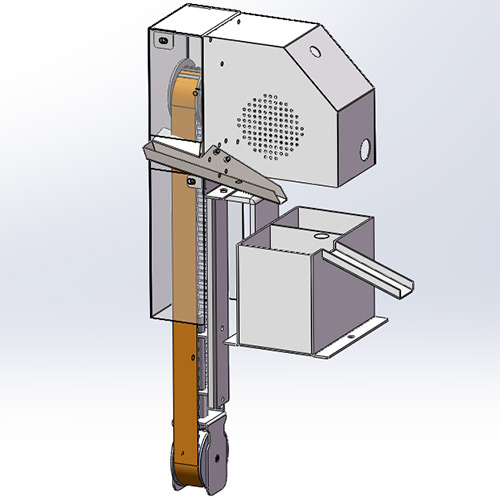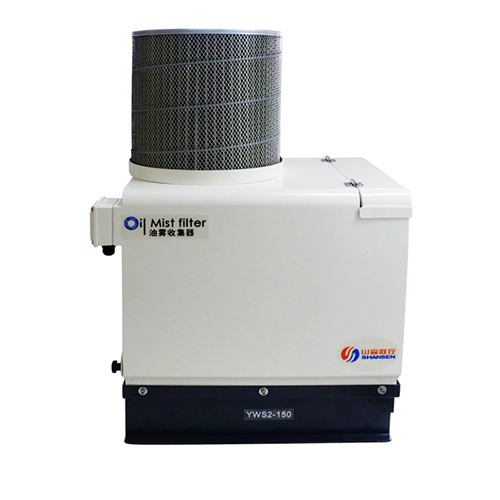-
WhatsAPP: +86 18706448138
-
Tengzhou, Shandong, China

The Ultimate Guide to Interlock Switches: Types, Benefits, and Applications
Discover the importance of interlock switches in industrial safety. Learn about types, benefits, and how to choose the right one for your needs.
Welcome to My Blog!
Before we dive into the content, if you’re interested in our products or have any questions, please feel free to visit our Contact Us page on the website. Our team is ready to assist you with inquiries, orders, or any support you may need.
Now, let’s get started on our journey together. I hope you find the content here insightful, engaging, and valuable.
Table of Contents
In today’s world of industrial automation and machinery safety, interlock switches are essential components that protect both equipment and operators. Whether you’re working in manufacturing, electrical systems, or any other heavy-duty sector, understanding what interlock switches are, their benefits, and how to implement them can make a significant difference in both safety and efficiency. This guide will take you through everything you need to know about interlock switches, from their types and benefits to installation tips and common industry applications.
What is an Interlock Switch?

An interlock switch is a safety device designed to prevent machinery or equipment from operating unless certain safety conditions are met. These switches are installed to ensure that hazardous processes cannot begin until safety protocols are in place, protecting both workers and equipment.
How Does an Interlock Switch Work?
Interlock switches operate by controlling the power supply to a machine. They function as a form of lockout, ensuring that machinery cannot be activated when conditions are unsafe. For example, an interlock switch on a door prevents a machine from running if the door is open, ensuring that operators are not exposed to dangerous moving parts.
Types of Interlock Switches
Interlock switches come in a variety of types, each designed to suit specific applications and requirements. The most common types include:
Mechanical Interlock Switches
Mechanical interlock switches are the traditional type, often used in basic safety applications. They rely on mechanical components to lock a system and prevent it from operating until conditions are met. These switches are durable and cost-effective, making them suitable for simple industrial systems.
Electrical Interlock Switches
Electrical interlock switches use electronic components to control the operation of a machine. They are more advanced than mechanical types and can handle complex safety systems with higher precision. These switches are often used in automated manufacturing environments and provide greater flexibility in controlling machines.
Magnetic Interlock Switches
Magnetic interlock switches use a magnetic field to control machinery operation. They are commonly found in applications requiring high durability and reliability, such as in hazardous environments where mechanical wear and tear might be a concern.
Pneumatic and Hydraulic Interlock Switches
For industries dealing with heavy machinery and complex systems, pneumatic and hydraulic interlock switches are often the best choice. These switches use air or fluid pressure to activate or deactivate a system and are ideal for controlling systems with high-power requirements.
Key Benefits of Using Interlock Switches

Interlock switches provide a wide array of benefits, making them essential in modern industrial safety systems. Here are some key advantages:
Enhancing Workplace Safety
The primary benefit of an interlock switch is its ability to prevent accidents and injuries. By ensuring that machinery cannot operate unless certain conditions are met, these switches keep workers safe from dangerous moving parts, hot surfaces, and other hazards.
Preventing Equipment Damage and Downtime
By ensuring that equipment operates only under safe conditions, interlock switches help protect machinery from damage caused by improper use. They also prevent costly downtime by ensuring systems run smoothly without unnecessary shutdowns or repairs.
Compliance with Safety Standards
Industries are governed by various safety standards, such as ISO 13849 or IEC 60947, which require the use of safety devices like interlock switches. Implementing these switches helps companies meet safety regulations and avoid penalties.
Cost Savings Through Efficient Operations
By minimizing accidents and equipment failure, interlock switches ultimately save businesses money. Reduced repair costs, lower insurance premiums, and fewer worker compensation claims make these devices a wise investment for any business.
How to Choose the Right Interlock Switch for Your Application
Choosing the right interlock switch involves understanding your specific requirements. Here’s how you can make the best decision for your application:
Determine the Safety Requirements
First, assess the safety needs of your system. Are you working in a hazardous environment? Do you need to ensure that certain conditions are met before starting the machinery? By understanding your safety requirements, you can choose a switch with the right safety features.
Voltage and Current Rating Considerations
Interlock switches come with different voltage and current ratings. Make sure the switch you choose is rated for the electrical specifications of your system. Using a switch with the wrong rating can lead to malfunction or failure.
Environmental Factors
Consider the environment where the interlock switch will be used. High temperatures, humidity, and exposure to chemicals or corrosive elements may require specific types of interlock switches designed for such conditions.
Mechanical vs. Electrical Options
Decide whether a mechanical, electrical, or magnetic interlock switch is best suited for your needs. Mechanical switches are generally more straightforward and affordable, while electrical and magnetic switches offer greater flexibility and precision.
Installation and Wiring of Interlock Switches

Proper installation of interlock switches is crucial to their functionality and safety. Here’s a general guide for installing and wiring interlock switches:
Step-by-Step Installation Guide
- Turn off power to the machine or system where the interlock switch will be installed.
- Position the switch at the correct location, ensuring it will be engaged when safety conditions are met (e.g., door closed, lock engaged).
- Wire the switch into the control circuit according to the manufacturer’s wiring diagram.
- Test the installation to ensure the switch operates as expected, cutting off power when safety conditions are violated.
Wiring Diagrams for Common Interlock Switch Types
Wiring diagrams are crucial for ensuring that the interlock switch is properly integrated into your system. Each switch type has specific wiring requirements based on its design and the machine it controls.
Tips for Ensuring Proper Installation and Functionality
- Always use certified and high-quality components.
- Ensure proper alignment between the switch and the mechanism it controls.
- Perform a functional test after installation to confirm proper operation.
Common Industries and Applications for Interlock Switches
Interlock switches are used in various industries and applications to ensure the safety of workers and machinery. Some of the most common applications include:
Interlock Switches in Industrial Machinery
In manufacturing, interlock switches prevent machines from operating when doors are open or safety guards are removed. This ensures operators cannot be exposed to dangerous moving parts.
Interlock Switches in Electrical Panels and Control Systems
In electrical panels, interlock switches are used to ensure that certain conditions are met before starting equipment, protecting both the operator and the electrical system.
Interlock Switches in HVAC and Automation Systems
For HVAC systems, interlock switches ensure that maintenance can be performed safely by preventing equipment from running when panels are open or components are removed.
Interlock Switches in Hazardous Environment Applications
Interlock switches designed for use in hazardous environments (e.g., explosive atmospheres, high temperatures) help mitigate risks associated with industrial processes in these sectors.
Maintenance and Troubleshooting of Interlock Switches

Proper maintenance is key to ensuring the long-term functionality of interlock switches. Here are some best practices:
Regular Inspection and Testing Procedures
Conduct regular inspections to ensure the interlock switch is functioning properly. Test the switch to verify that it engages and disengages correctly, cutting power to the machinery when necessary.
Identifying and Fixing Common Issues
Common problems with interlock switches include misalignment, wear on mechanical components, or electrical faults. Regular testing and maintenance can help identify these issues early on.
When to Replace Your Interlock Switch
Interlock switches should be replaced if they show signs of significant wear or malfunction, or if they fail to meet safety standards after testing.
Conclusion
In conclusion, interlock switches play a vital role in modern industrial safety. They protect workers, prevent machinery damage, ensure compliance with safety regulations, and save costs through efficient operations. Whether you’re choosing, installing, or maintaining an interlock switch, understanding its features and applications will help you make the right choice for your industrial needs.
By investing in high-quality interlock switches and implementing them correctly, you can create a safer, more efficient work environment that meets the growing demands of industrial automation and safety standards.
FAQ
What is an interlock switch?
An interlock switch is a safety device that prevents machinery or equipment from operating unless specific safety conditions are met. It ensures that certain parts of the machine are secured or locked before it can be activated.
How does an interlock switch work?
An interlock switch works by interrupting or controlling the power supply to machinery. It prevents the system from starting if conditions such as open doors or disengaged safety mechanisms are detected, ensuring the operator’s safety.
Why are interlock switches important?
Interlock switches are essential for preventing accidents and injuries in industrial environments. They ensure that machines cannot operate under unsafe conditions, such as when a protective cover or safety gate is open.
Where are interlock switches commonly used?
Interlock switches are commonly used in industrial machinery, electrical panels, automated systems, HVAC systems, and environments where safety is critical. They are widely applied in sectors like manufacturing, automotive, and energy.
How do I choose the right interlock switch?
When choosing an interlock switch, consider factors like the type of machinery, voltage ratings, environmental conditions (e.g., hazardous or corrosive areas), and whether the switch needs to meet specific safety standards or certifications.
Ready to Enhance Your Machinery Safety?
Ensure your operations run smoothly and safely with high-quality interlock switches. Browse our selection today and find the perfect switch for your needs. Contact us now for expert advice and top-tier products!



